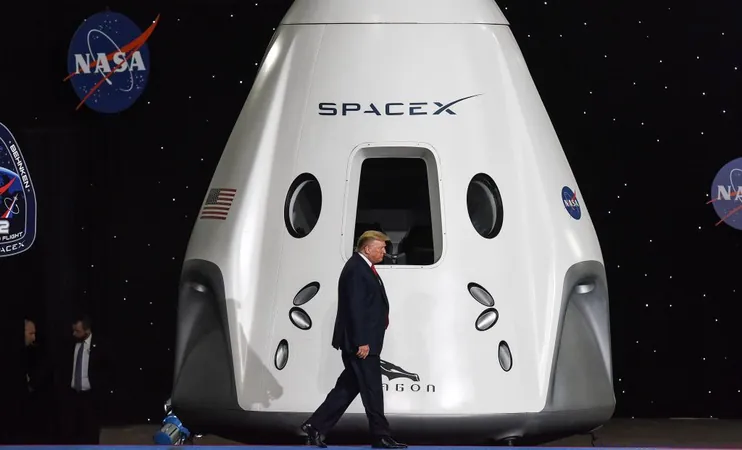
What a Second Trump Presidency Could Mean for NASA and the Future of Space Exploration
2024-11-11
Author: Wai
Impact on NASA's Artemis Program
As President-elect Trump prepares to return to the White House in January, substantial shifts are anticipated for NASA's Artemis program, particularly as the nation races to send astronauts back to the Moon by 2026—an ambitious timeline that mirrors China's own goal to achieve a lunar landing by 2030. Experts in space policy suggest that under Trump's administration, there may be both benefits and challenges to America's space exploration efforts.
Trump's First Term and the Artemis Program
One of the most significant elements of Trump's first term was the initiation of the Artemis program, aimed at establishing a sustainable human presence on the Moon and preparing for future missions to Mars. With the potential for a second term, many insiders expect this initiative to receive renewed urgency—especially considering China's spacetech advancements and aspirations.
The Role of Elon Musk and SpaceX
Elon Musk, the billionaire founder of SpaceX and a key Trump supporter, is poised to thrive under a supportive regulatory environment that could create more opportunities for his companies. Reports suggest that Musk has been in discussions with Trump about potentially placing his employees in top government positions, including within the Defense Department, which signifies a possible shift in regulatory dynamics that may enable faster development of groundbreaking projects like the Starship rocket.
Challenges Facing NASA
The implications for NASA could be far-reaching. Currently, NASA's Space Launch System (SLS), designed to be the workhorse of the Artemis program, has been criticized for its high costs—around $4.1 billion per launch. With SpaceX on the verge of significantly lowering launch costs through the reusable Starship, questions loom over the SLS's viability and the overall strategy of the Artemis program.
Concerns About Earth Science Missions
Moreover, many wonder how Musk's growing influence in the government might affect not just NASA's lunar ambitions but also its broader Earth science missions, which faced cancellation attempts during Trump's first presidency. As we tackle issues like climate change and global warming, the fate of these missions hangs in the balance.
Competing Priorities in Space Policy
As Trump tackles pressing domestic agendas, including inflation and foreign policy challenges related to ongoing conflicts across Ukraine, Gaza, and Lebanon, prioritizing space policy might be more complicated than in 2016. Experts note that the mix of space exploration and national security interests adds another layer of complexity to an already crowded policy agenda.
International Competition in Space
With China's accelerated timeline for Mars sample return missions and their lunar programs in full swing, American leadership in space could face stiff competition. While the Trump administration aims to maintain this leadership, there are concerns that existing regulations may not adequately address the saturation in low-Earth orbit driven by satellite megaconstellations, risking both environmental and operational safety.
Conclusion
Ultimately, the direction NASA takes in a second Trump term will largely depend on key appointments and the resulting influence of various stakeholders, including Musk. With potential shifts in the political landscape, the idea of human exploration of Mars could become polarized, redefining how Americans view space exploration. As the new administration gets closer, the ambition to lead in space against the backdrop of international competition will define not only NASA's mission but also the very future of human exploration beyond Earth. Will America rise to the challenge, or will it be overshadowed by competition from countries like China? Only time will tell.
 Brasil (PT)
Brasil (PT)
 Canada (EN)
Canada (EN)
 Chile (ES)
Chile (ES)
 España (ES)
España (ES)
 France (FR)
France (FR)
 Hong Kong (EN)
Hong Kong (EN)
 Italia (IT)
Italia (IT)
 日本 (JA)
日本 (JA)
 Magyarország (HU)
Magyarország (HU)
 Norge (NO)
Norge (NO)
 Polska (PL)
Polska (PL)
 Schweiz (DE)
Schweiz (DE)
 Singapore (EN)
Singapore (EN)
 Sverige (SV)
Sverige (SV)
 Suomi (FI)
Suomi (FI)
 Türkiye (TR)
Türkiye (TR)